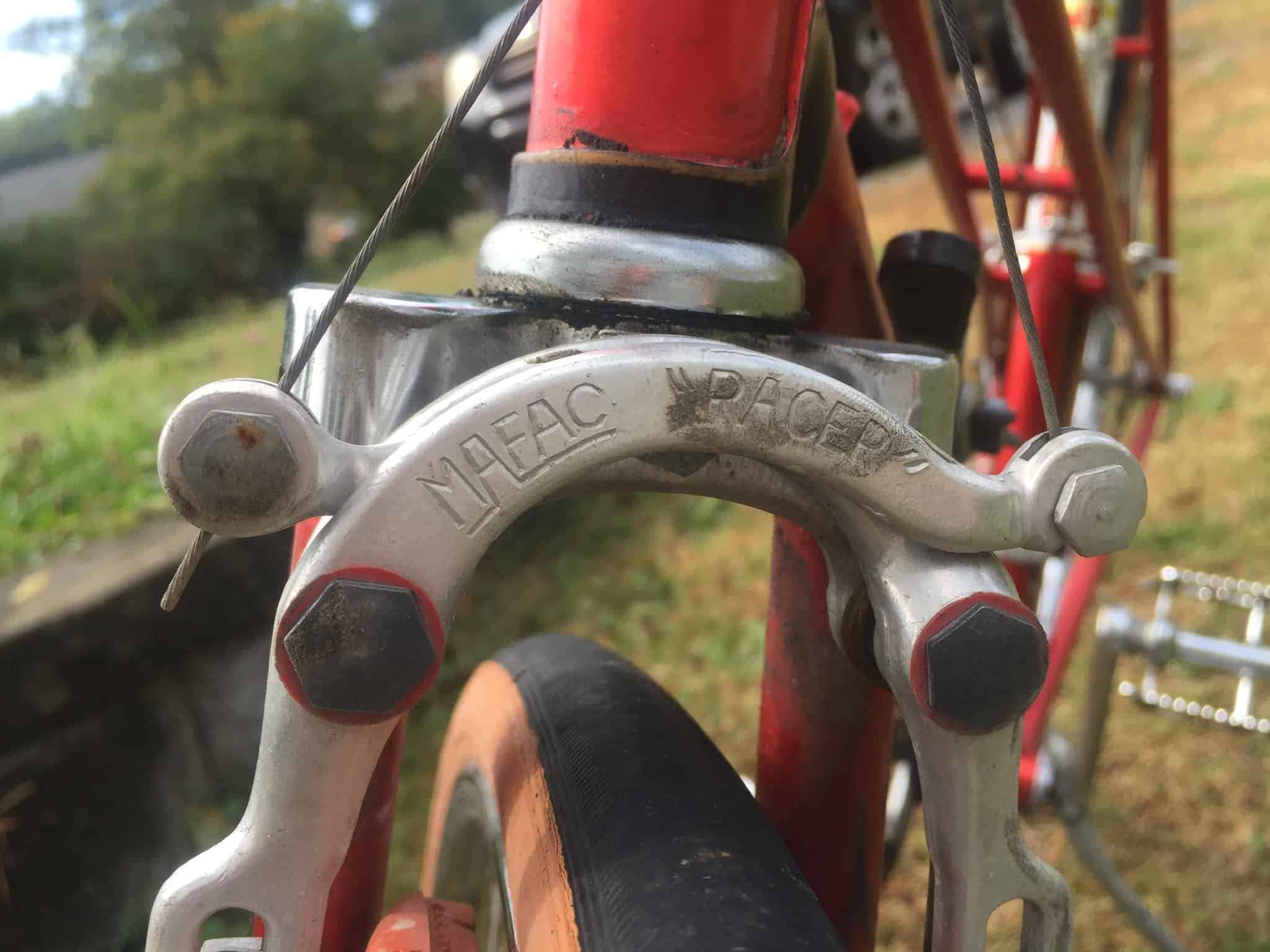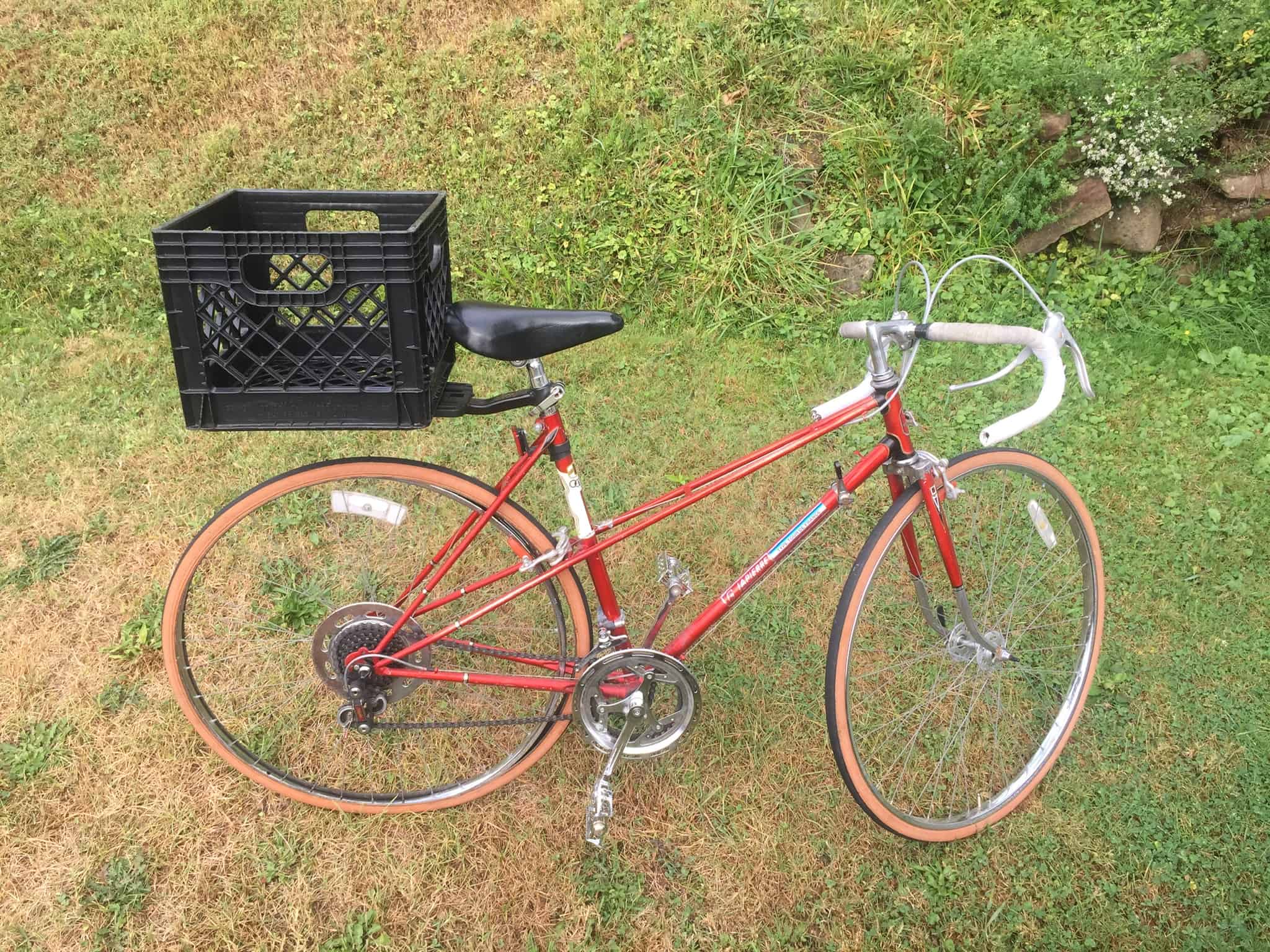Lapierre SuperLux: Rare in America
Unlike the plentiful examples of Peugeots, Motobecanes and Gitanes found on the streets of American town and cities, there are few Lapierre bikes to admire. Even fewer Lapierre Superlux models. They weren’t exported to the US and weren’t made en masse in France like their bigger rivals. Lapierre was founded in Dijon, which is quite a different city to Saint Etienne, where much of the French bike industry was based. Dijon is a market town, centred on agriculture, not famed for its bicycle history or culture.

Superlux
This bike was sent in by Robert, who is interested to know more about his mixte which he just purchased. Strangely enough, Carl in the US just last week sent me a San Francisco Craiglist ad which featured a men’s Lapierre Superlux. So there are least two of them in the States! To begin with, the name Superlux is a blend of “super” and “luxury” ( luxe in French), which applies no real definition to the quality of the bike. Both these bikes would have been funcitional and affordable models for the casual rider.


The Bike
The Lapierre Superlux was not built with Reynolds or Vitus tubes, and had simple lugs and stick-on decals which remind me of similar decals of some Gitane bikes of the same era. It does have half-chrome forks and chromed capped fork crowns, and I like the black and gold detailing of the headtube lugs as well as the seat stay ends, small but nice features. The red colour is really quite vivid and eye-catching, and I think it’s the best feature of the bike.

Simplex Prestige
Most French bikes of this period, which I’d guess to be around the 1970’s, were built with French components. It is no suprise, therefore, to see Simplex Prestige derailleurs and shifters installed on this bike. They are a competent and reliable set of components, and they seem in decent mechanical condition despite delrin plastic bodies. However, it’s important to check for cracks in them, especially in the rear derailleur, and the shifters should never be pulled too hard as they are liable to snap; years of weathering can make the plastic as brittle as a frozen Kit Kat.


Is it a Classic?
This is a question that is asked around bike vintage forums, and the answer is really in the eye of the beholder. A Lapierre mixte is a rare find on the other side of the Atlantic, and the fact that it was built in Dijon by a reputable French bike firm is cool enough in itself. It wasn’t an expensive bike and has no high end parts, but it has no pretentions to be that anyway; it is an atrractive and well-made vintage bike, hard to find, and the rest is down to how much the owner wants to appreciate it.

Improving a Vintage Bike
Improving a bike is a subjective issue, often down to personal taste and aesthetic preferences. This bike looks like it has all its original parts, including its Mafac Racer brakes, dimpled 27¼ rims ( are they Rigida? ), Normandy high flange hubs, Lyotard 36 pedals, Nervar cottered crank with protective guard, Ava stem and cushioned saddle. There’s nothing, in my view, to change, except perhaps just three things: take off the crate from the back (!), replace the hoods ( or half hoods ) on the brake levers, and I’ve always disliked spoke protector plates on the rear hub, I have a penchance for taking them off. To me, a bike just looks better without one, and this is a cool bike.



I have a third.
(Esthetically hideous, but it’s highly functional and the ride is like nothing else. It seems to have lived near the sea for quite a while, serving as someone’s neighborhood beater in SF’s Outer Sunset district.)
I have had 3 Lapierre Superlux bicycles white, red and now a blue. It is sort of like finding a 4 leaf clover. For sentimental reasons I love the bike, however, it is really no different than basic models produced by Gitane, Follis, Flandria, Jeunet, Liberia or many others. I did really impress a newbie when I told him I owned a Lapierre since he was thinking of the high end bicycles produced today under the same name. I continue to look for another white one.
Thanks for the comment, I think sometimes we just like a model for our own reasons, a liking that may be difficult to explain to others who admire high end bikes. If you gave me a choice of owning a very expensive vintage Colnago or a much less lauded Peugeot PSV, I’d take the latter every time. The appeal of simpler functionality and style has an aesthetic of its own; I think this is what makes vintage bikes so desirable. I also believe that people owned professional level bikes when they were young, so nostalgia and sentimentality is more often reserved for the bikes we actually saw and owned back in the day!
Hi I have a blue classic , how much is it worth ? We are in Scotland
Hello, where in Scotland are you based? Pictures would help value it, please try and upload some as I’d be interested in buying it. Thanks!
I have recently acquired an early @70s Lapierrre Special Tour de France frameset, a very rare bike here in the UK. It is full 531 double butted, with particularly noticeablepencil seatstays. I believe this may have been near the top of whatever range of bikes Gaston was building then, although there was no sponsorship of a race team to warrant the name.
I have built it up with contemperary parts, including a Smplex deraillieur as the mounting is particular for these as there is no thread in the gear hanger.
Hello, what an absolute beauty that is! It’s one of the finest bikes I’ve seen for a good while, and I imagine it’s a lovely bike to own and ride. Thank you for sharing such a great example a vintage Lapierre, and such a rare model too! Cheers.